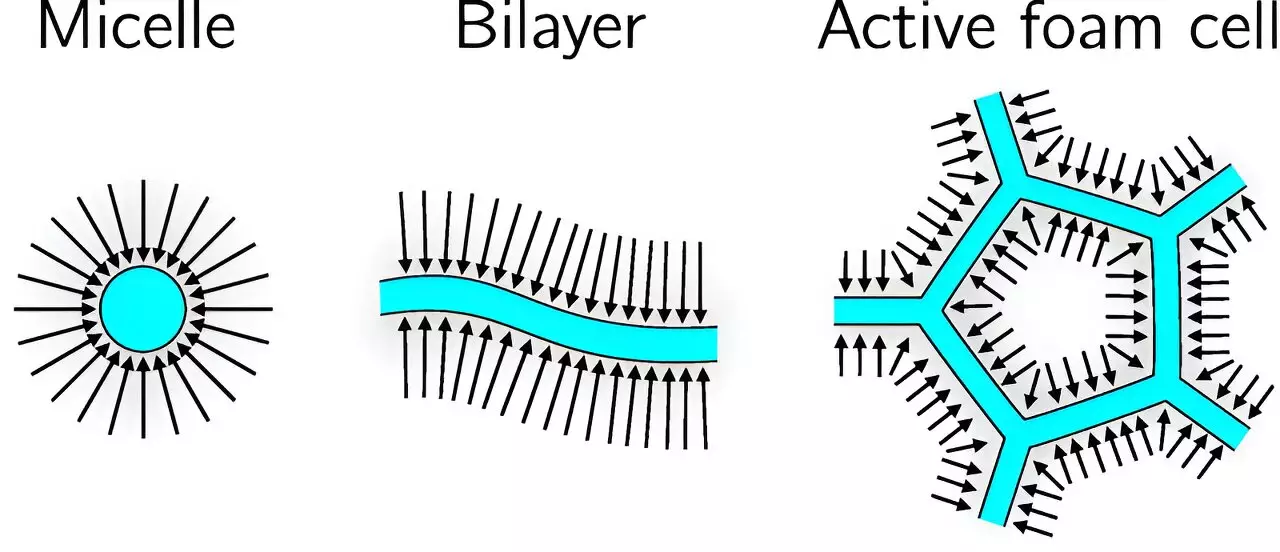Self-organization is a fundamental aspect of life and nanotechnology, where individual particles come together autonomously to create complex patterns. Professor Erwin Frey and his team at LMU Munich have developed a theoretical model that explains the formation of patterns such as active foams from a mixture of protein filaments and molecular motors. This model sheds light on the interplay between these components and how they lead to the emergence of diverse structures.
Protein filaments, such as microtubules, and molecular motors are essential components of the cytoskeleton in cells. They play a crucial role in processes like cell division by constructing and rebuilding cellular structures. When these components interact dynamically, they can give rise to various structures, including aster-like micelles and active foams. The active foam is formed when the number of microtubules increases, leading to a network of microtubule bilayers with filaments pointing in opposite directions.
The Mathematical Model
Professor Frey and his team developed a mathematical model to explain the pattern formation observed in experiments. Through numerical simulations, they were able to replicate the transition from micelles to active foam based on the density of microtubules. The interaction between motors and microtubules is crucial for organizing the filaments into a structured network. The motors connect microtubules and align them parallelly, creating a zip-fastener-like effect that allows for continuous rearrangement of the network.
Transition from Micelles to Active Foams
The transition from micelles to foams is dependent on the number of motors and microtubules present. When there are fewer components, individual micelles form with a high degree of freedom in movement. As the number of components increases, band-like layers emerge, eventually leading to the formation of complex structures like foams. These foams exhibit an ordered structure with a mixture of pentagons, hexagons, and heptagons, resembling honeycombs but with the added quality of self-rearrangement.
The theoretical model developed by Professor Frey and his team has broad implications for understanding active matter and its applications in various fields. It provides insights into the physical mechanisms behind pattern formation and could potentially advance bionanotechnological applications in the future. By comprehensively studying the interplay between filaments and motors, researchers can unlock new possibilities for creating complex patterns and structures in synthetic systems.
The development of a theoretical model to explain the formation of patterns in active foams represents a significant advancement in the field of self-organization. By delving into the intricate dynamics of protein filaments and molecular motors, researchers are able to uncover the fundamental principles governing pattern formation. This research not only enhances our understanding of biological processes but also paves the way for innovative applications in nanotechnology and beyond.


Leave a Reply